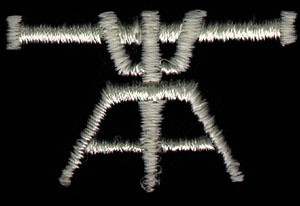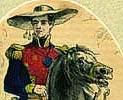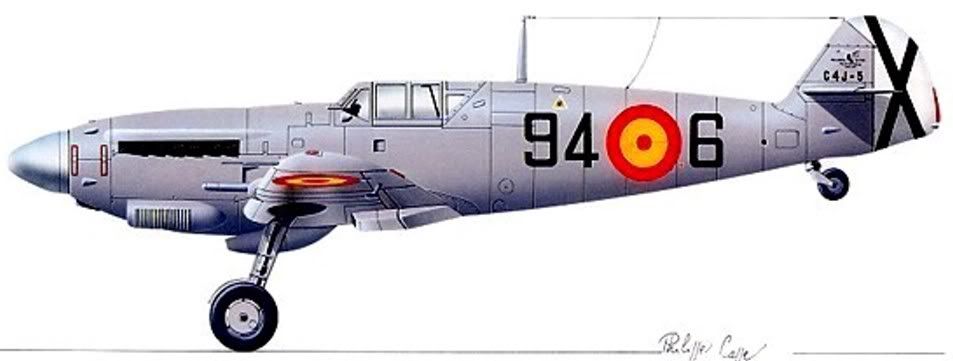

 The Accurate Reloading Forums
The Accurate Reloading Forums  THE ACCURATE RELOADING.COM FORUMS
THE ACCURATE RELOADING.COM FORUMS  Guns, Politics, Gunsmithing & Reloading
Guns, Politics, Gunsmithing & Reloading  Military & Military Surplus
Military & Military Surplus  Weapons of the Spanish Civil War
Weapons of the Spanish Civil WarGo  | New  | Find  | Notify  | Tools  | Reply  |  |
| One of Us |
reminds me of the "Ye Olde Hunter" ads in American Rifleman 50's-60's. one thing you could count on was colorful descriptions of the items for sale- "mauser" couldn't be printed without "rarest of the rare", "issued to crack Alpine troops", "legendary carbine of the Afrika Korps", etc. describing the item. | |||
|
| One of Us |
Recommended reading: "Homage to Catalonia" by George Orwell. No need to be shy about any politics, Tin Can. Franco was a despot, and the Spaniards were, I understand, happy when he was gone. That said, the Communists on the other side were mainly bunglers. According to Orwell. I'm not certain anyone knew just how repressive--did I say murderous?--Stalin was at the time. So there was a good deal of innocent idealism. Anyway, the only ones I sympathize with are the Anarcho-Syndicalists. Just because they have such a cool name. LOL. flaco | |||
|
| One of Us |
an error many make about Orwell is that his experience in Spain made him an anti-communist, when what it did do was make him an anti-Stalinist; Orwell's actual core politics remained intact.
if you have not seen "The Good Fight", you will get a heavy dose of the idealism many of them had should you watch it- in fact there are many images in the film of these old men when they were in their early twenties, and their sheer youth is enough to break a person's heart. I was always partial to "Dinamteros". | |||
|
| One of Us |
Yes, there were some. About automatic weapons, a lot of of MP28 were used. Some French and british LMGs among the International Brigades. | |||
|
one of us |
Watched a docudrama movie last evening called "Brother Against Brother: The Spanish Civil War" and while it was a very political piece with a terribly one-sided presentation, it did have a lot of actual footage from the civil war. Many, many Mausers, probably more different types and models than could ever be calculated - I'm almost certain I saw Model 1888 with the butter knife bolt handle and for sure I saw double barreled shotguns, a Remington Rolling Block and I don't know what all – many I probably would not have know even if better pictures were there.. I stopped posting at the "Political Forum" of AR for a number of reasons and have no wish whatsoever to bring the same sort of drivel to this venue but found a chilling thought when the announcer stated the Republicans fought with some 35000 foreigners from 50 countries in the ranks of the “International Brigades†while the Nationalists had ‘help’ primarily from Italy, Germany and Hungary – Hungary also had more people on either side than any other country. The US primarily supplied men (~2800) to the Abraham Lincoln Battalion, the George Washington Battalion and the John Brown Battery which along with various volunteers from British, Irish, Canadian, and other nationals formed the Fifteenth International Brigade. ("Lincoln Brigade" is a misnomer originating with an American support organization, Friends of the Abraham Lincoln Brigade.) The George Washington Battalion lost so many men they were transferred into and absorbed by the Abraham Lincoln battalion. And they made a hard point that while the Germans and Italians supplied fast amounts of materials to Franco and the Nationalists, the Republicans bought and paid for virtually everything they had, especially the stuff from the Soviet Union. Quite an interesting piece of work in spite of the bias, especially if you would like to know more about the Spanish Civil War. Lord, give me patience 'cuz if you give me strength I'll need bail money!! 'TrapperP' | |||
|
| One of Us |
as you state, that is the correct description. | |||
|
| one of us |
Yep lots of prices have gone up, All but...That Zebco 33 spincast combo! ________ Ray | |||
|
One of Us |
This is really interesting because when I was in Spain in 1956 visiting a US (NATO) Air Force base (all US personnel there had to wear civilian clothes!) the Spanish Air Force was still flying the JU 88 twin-engine bomber. I suppose they had to fabricate parts in Spain, unless they had acquired a real big stockpile prior to 1945.  "Bitte, trinks du nicht das Wasser. Dahin haben die Kuhen gesheissen." | |||
|
one of us |
I don't know without looking about the JU88 but the A/C you saw may very well have been license built in Spain, I know they (CASA) built a couple hundred (?) Ju52's after the war and supposedly the 'last' Alte Tante Ju was sold to the Confederate Air Force by the Material Disposal Agency of the Spanish air force in 1976. This is what she looks like today:  I could be wrong but I believe the Ju 52 that Lufthansa flies today is an ex-Spanish A/C. I saw some of these things that were painted bright yellow and red being used for air/sea rescue work and this was in the early to mid-1960s. Tough old birds, and I love to hear them run up and see them fly. Lord, give me patience 'cuz if you give me strength I'll need bail money!! 'TrapperP' | |||
|
| One of Us |
 HA-1112-K1L a Hispano powered/built Bf109 was in post war Spanish service, also; note the engine cowling alterations to accommodate an "un-inverted" V-12 Hispano. a page full: http://wp.scn.ru/en/ww3/f/406/24/0 there was a post war Czech built 109 variant, also, used by Israel. | |||
|
| one of us |
The book is very good reading and explains quite in detail how the communists rather persecuted and killed their socialist, POUM and anarchist allies, both Spaniards as well as foreigners, than fighting in the trenches. Also the later famed Dolores Ibarruri known as "La Pasionaria" basically did on the Left what Goebbels was doing on the Right. It seems that the basic interest of the PCE was to clean the anti-Franco forces whom I rather not call republicans because only a few of them could rightfully wear that denomination, rather than winning the war against the Nationalists. During the conflict, more people were executed on both sides than killed in combat. It were in fact the Reds who started to massacre civilians, crucify priests, rape nuns and kill as many "burgeois" as possible when the conflict broke out. The former editor and owner of the Stuttgarter Zeitung, the liberal Dr. Josef Eberle has personally witnessed these events. Another suebian liberal, Felix Schlayer witnessed the massacre of Paracuellos, where the reds killed thousands of, according to them, too-well-to-do spaniards near Madrid. Being the Norwegian consul he achieved to safe thousands of people's life, including women and children who were imprisoned in Checka jails in Madrid. Wikipedia on the Matanza de Paracuello. His book on the Red Terror during those years is good reading: Matanzas en el Madrid Republicano. It seems that due to Hemingway's writing we tend to romantizice the "Republicans" and villanize Franco. True, he did sentence and execute some after the end of the civil war. However, as we saw in Stalin's Russia, the number of victims would have been MUCH higher had the Reds taken over. Their first thorough "purgas" would have gone not against the burgeoasie but against the anarchists, democrats, socialists and other leftists "heretics". Regular citicens woudl have followed. Franco left the country in an acceptable state, unlike Tito, Honecker and others who left their nations in ruins and Gulags. Last but not least, Hemmingway had spent most of his time there not visiting the combat zones but drinking wine at the Café Gijon. | |||
|
| new member |
There are a couple of books where find good info about weapons used during this war. Maybe Gerald Howson's "Arms for Spain: The untold story of the spanish civil war" could be one of the best if you're looking for info about how the government side got all kind of weapons ( and how the Soviet Union made a good bussines!) This side use all kind of rifles, machine guns canons and stuff they could get, so the gunrunners made a real clearance of their stocks. Obviously, it was a nightmare when it came to talk about logistics. There are a couple of books wrote by foreing soldiers speaking about the lack of ammo everywhere. So during the first year and a half, the government troops used: Spanish mauser, modelo 93, 95 and 1916, 7 mm German Gewer, 7.92 mm French Lebel and Berthier in 8 mm Lebel. British P 14 in .303 Japanese arisaka in 6.5 Russian Mosin Nagant in 7.62 MN US P17 in 30.06 US (manuf Winchester 95) in 7,62 MN Belgian Mauser in 7.65 mm Austrian Grass in 11 mm Mannlicher M95 in 8 mm Italian made Veterli in 11 mm German Mauser previous 98 model in 11 mm and 7.92 S mm And don't forget rifles manufactured in or for South America Countries ( like Mexico, Ecuador, Argentina, Chile, Uruguay...) I make no diference because their caliber used to be 7 o 7,65 mm. So the lever action rifle we can see in the picture is a Model 95 Winchester in 7.62 Mosin Nagant ( IMHO maybe the most beautiful weapon used). And the other man carry a straigth pulled, M 95, 8 mm Mannlicher. Also, Winchester copies in 44-40 WCF, made by Gabilondo and Cia, called Tigre and Spanish copies of the Rolling block System in the same caliber and in .43 Spanish, were widely used. The rebels, among with the Spanish Mauser they took at the beginning of the war, got small arms from Germany, mainly Gew 98 and Kar 98 and made a good use of the arms they took after the battles. They also made a limited use of the 6.5 Carcano (They don't rely on them). But this is not the whole list: Take a short walk with a metal detector across a battlefield and you'll see it's not uncommon to find four or six different calibers, and clips and bullets from a lot of different makers,in a very small place. You can find black powder cartridges, side by side with high performance 7,92 mm last model, and Soviet made Incendiary bullets and so on. To make short a long story, it's a paradise for cartridges and mauser collectors. Greetings. Javier. | |||
|
| Powered by Social Strata | Page 1 2 |
| Please Wait. Your request is being processed... |
|

Visit our on-line store for AR Memorabilia

